Service hotline
+86 0755-83044319
release time:2022-03-08Author source:SlkorBrowse:18113
As IC transistor density gets closer to the physical limit, it becomes increasingly difficult to improve IC performance solely by improving the manufacturing process. Around how to develop the post-Moore era of IC industry, the world is actively looking for new technologies, new methods and new paths. In order to further promote the technological innovation and accelerate the industrial development of China's integrated circuits in the post-Moore era, China Semiconductor Industry Association and China Electronics News jointly launched a series of reports titled "Academicians talk about technology Evolution in the Post-Moore Era", which will interview academicians in related fields to discuss the development direction of the semiconductor industry in the post-Moore era.
At present, wide band gap semiconductor (also known as the third generation semiconductor) devices and materials industry are being deployed at home and abroad. Why has the wide band gap semiconductor industry won the market favor? What are the characteristics, difficulties and pain points in the application process? What direction should relevant industries develop in the future? Hao Yue shared his views on the current problems, development difficulties and future development direction of the wide band gap semiconductor industry.
Reporter: First of all, I would like to ask you to make a brief introduction to the wide band semiconductor. What are the characteristics of this kind of semiconductor and what are its applications in the industry?
Hao Yue: The most obvious feature of wide band gap semiconductor is its wide band gap width, which is closer to insulator in terms of material properties. Therefore, gallium nitride and silicon carbide represented by this kind of wide band gap semiconductor materials, with high breakdown electric field strength, high operating temperature, low device conduction resistance, high electron density and other advantages, currently wide band gap semiconductor mainly in three fields have a strong market competitiveness.
The first is rf devices, namely microwave millimeter wave devices. Compared with semiconductor materials such as gallium arsenide and silicon, the wide band gap semiconductor devices in microwave millimeter band have significantly higher working efficiency and output power, and are suitable for rf power devices. Rf devices for civil use are mainly used in mobile communications, including 4G, 5G and 6G communications in the future. For example, the newly installed 4G and 5G mobile communication base stations in China almost all use gallium nitride devices. In particular, THE 5G base station adopts MIMO transceivering system. Each base station transmits and receives 64 channels, and its power consumption is more than three times that of the 4G base station. Moreover, the density of the base station is higher than that of the 4G base station, so it is almost impossible to use high-efficiency gallium nitride devices. In the future, 6G communication frequency will be higher and the number of base stations will be more prominent.
The second is high-power power electronic devices. High-power and high-efficiency power electronic devices are needed for quick charging devices, power transmission and transformation systems, rail transit, electric vehicles and charging piles. No doubt wide band gap semiconductor, especially silicon carbide, gallium nitride has more obvious advantages than other semiconductor materials.
The third is photoelectric devices. The wide band gap semiconductor has obvious advantages especially in short - wavelength optoelectronic devices. Blue light, for example, now uses gallium nitride for all semiconductor lighting. In violet light, ultraviolet light and even in yellow light, green light can be directly used as nitride semiconductor materials.
Of course, there are other application areas, such as detectors, sensors and so on, the application is very broad.
Note: According to the data, the market size of wide band gap semiconductor devices has shown a very obvious upward trend since 2017. In your opinion, do wide-band semiconductors have the potential to be a disruptive technology in the post-Moorish era, and to what extent will they replace silicon?
Hao Yue: In the post-Moore era, silicon integrated circuit chips face great challenges in terms of integration and power consumption, which slows down Moore's law of chip integration every 18 months. Therefore, new solutions are sought, including new solutions of silicon 3D integrated circuits and system chips. System chips are also called More than Moore's Law, which refers to the continuous expansion of silicon integrated circuits to integrate with other materials or application fields to open up new application markets.
I think silicon integrated circuits are highly integrated with other types of semiconductors, such as compound semiconductors and silicon devices, growing compounds on silicon substrates, which is a very interesting, very promising field in the post-Molar era. It is also an important direction for the development of wide band gap semiconductor devices and integrated circuits in the future.
However, it is impossible for wide band gap semiconductor materials to replace silicon. More than 90% of integrated circuits still use silicon-based semiconductors, as well as solar cells, which are mainly made of silicon. Wide band gap semiconductor devices and integrated circuits only occupy a small share in the global semiconductor market, mainly used in high power rf devices, power electronics devices and short-wavelength optoelectronic devices. Silicon is still the dominant semiconductor material. Because silicon materials are difficult to emit light and improve output power at high frequencies, wide-band semiconductors have independent development space and a huge application market.
Reporter: what difficulties still exist in the process of promoting China's wide band gap semiconductor materials and devices to the industry, what are the reasons for these difficulties and how to solve them?
Hao Yue: At present, China's semiconductor industry is facing a "bottleneck" problem, mainly in key equipment and materials. However, in terms of wide band gap semiconductor equipment, we have achieved localization in most fields at present, from material growth, device and circuit process to test packaging equipment, the domestic basically can meet the needs. Only lithography remained unsolved. In fact, the photolithography process needed for a wide band gap semiconductor such as gallium nitride does not need to be very advanced. A photolithography accuracy of 90 nanometers is sufficient. With the support of relevant national policies, we can achieve this technology. The photoengraving machine that has been successfully developed at present should achieve stable mass production as soon as possible, and we still need to make efforts in this regard. We can do well can become industrialization of things, we must do it.
Reporter: some manufacturers say that currently in many cutting-edge fields, the domestic semiconductor device production can not meet the requirements (such as device efficiency), why? How to solve these problems?
Hao Yue: High thermal conductivity and low loss are inherent advantages of wide-band semiconductors. The problem is that we failed to make full use of these advantages in product development. For example, gallium nitride at a 4GHz frequency of 100W output power, device efficiency can reach more than 70%. For other materials, can reach 50% is good, high efficiency is determined by the nature of the material. Whether gallium nitride or silicon carbide, wide band gap semiconductor efficiency is very high. However, in the subsequent application of devices, it is very important to ensure the low loss of materials in each step.
In silicon carbide device, for example, after the completion of the production of packaging, the current basic failed to our device packaging, in accordance with the device characteristics and should have to do, still adopt the mode of high power devices of silicon encapsulation, thus increased the loss of wide bandgap semiconductor high efficiency and low loss was so encapsulation, basic have no effect. This is just one example, and I think there's a lot more that can be done in terms of technology adoption.
Reporter: If the wide band gap semiconductor technology is further popularized, can it meet the high-end requirements of high performance, high temperature resistance and long service life of electronic devices?
Hao Yue: I think it can be solved completely. Because in the wide band gap semiconductor, our device development technology and indicators are basically synchronized with the international, and even some indicators are leading. The question is how quickly these technologies can move from research and development to production. At present, many domestic manufacturers themselves are not r & D ability, the basic is to take doctrine. For example, our Wide Band Gap Semiconductor National Engineering Research Center at Xidian University has developed many high-index materials and device technologies. At first, manufacturers were able to build the device, but it was difficult to innovate on that basis. Our country believes that enterprises are the main body of innovation. If enterprises just use technology but do not innovate, no matter how good the technology is, it cannot be continuously transformed into productive forces. At present, many enterprises have very limited investment in RESEARCH and development, and the main investment in research and development still depends on the state.
By comparison, Intel spends more than $10 billion a year on research and development of leading semiconductor companies. Chinese enterprises should improve their innovation capacity and also find ways to increase investment in r&d.
Reporter: It is understood that universities and research institutes are mainly evaluated by the publication of papers. This evaluation system may make it difficult for universities and industries to cooperate closely. What roles should schools and enterprises play respectively in the university-enterprise alliance?
Hao Yue: The research of universities and national research institutes must aim at the frontier of world science and technology. There is no doubt about that. One of the tasks of universities and research institutes is to explore regular things and constantly pursue new things. This is true not only in Chinese universities, but in universities around the world. Therefore, I think it is right to attach importance to publishing papers, especially in academic conferences and academic journals. Scientists and scientists should face the frontiers of science and technology, and the mission of scientists is to pursue higher goals.
Should the scientific research achievements of colleges and universities be quickly transformed into real productive forces? I think it certainly is. But how to ensure that the research results of colleges and universities can be transformed into real productivity? There is a tendency for professors to run companies directly, which I think is also questionable. It is very difficult for a professor to be able to face both the technological frontier and the main economic battlefield.
So how to solve this group of contradictions? In my opinion, relying on the combination of industry, university and research to improve the enterprise's own RESEARCH and development capabilities is the key to solve the problem. Therefore, how to realize the enterprise as the main body of innovation, this is something that we should make concerted efforts.
Reporter: Some big international companies, such as Clarie and Infineon, have basically covered the whole industry chain with their technologies, from substrates, devices to applications. If domestic enterprises compete with such enterprises and want to form competitiveness in the high-end field, how should they do?
Hao Yue: Kerui company is specialized in silicon carbide semiconductor materials at the beginning of the company, completely do materials. As the material grew, it began to make devices, vertical high-power blue leds, and then electronics. Infineon has been doing devices, not materials. Only after they became world leaders in their own fields did they gradually begin to develop up and down the industrial chain.
So for our enterprises, my advice is to do what we can do well, to do the best, to do impeccable. An enterprise should not consider the industrial chain at the very beginning. It should choose a field, do it to the extreme, and then consider expanding upstream and downstream. It is impossible to achieve first-class materials and devices in the beginning. So what is the enterprise positioning, should be clear first.
Reporter: Gallium nitride and silicon carbide have achieved mass production. In the wide band gap semiconductor field, what are the materials facing the future?
Hao Yue: I think gallium oxide is the most likely material, which has a wider band gap than gallium nitride and silicon carbide, reaching 4.6~4.8 electron volts. Our current research shows that such materials are promising.
In the next decade or so, gallium oxide devices are likely to become competitive power electronics devices that will directly compete with silicon carbide devices, just as silicon carbide and silicon power devices are today.
Gallium oxide is not available at present, depending on the progress of subsequent research. In addition, the band gap of diamond material is 5.4 electron volts. The research foundation of this kind of material and device is very good in China, but there are still many technical difficulties in this kind of material and its industrialization is quite difficult, which depends on what kind of technological breakthrough will be made in the next 10 years. It is fair to say that we have been working tirelessly.
Disclaimer: This article is reprinted from "China Electronic News", this article only represents the author's personal views, does not represent the views of Sakwei and the industry, only to reprint and share, support the protection of intellectual property rights, please indicate the original source and author, if there is infringement, please contact us to delete.

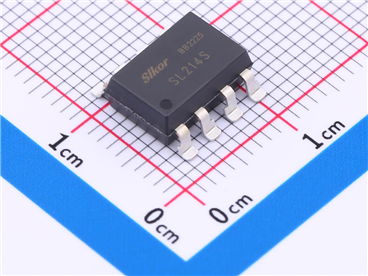
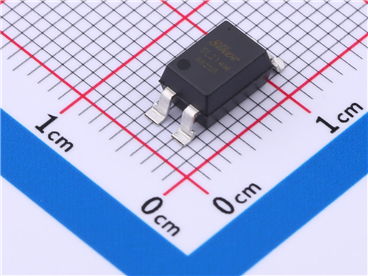
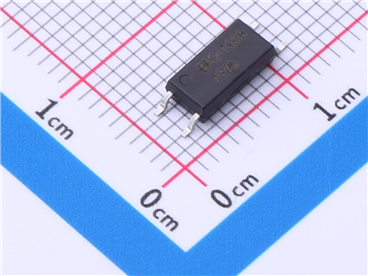
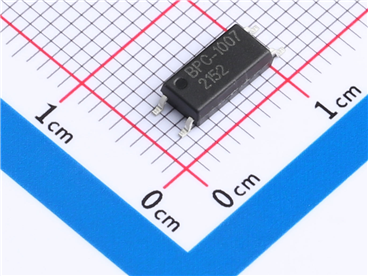


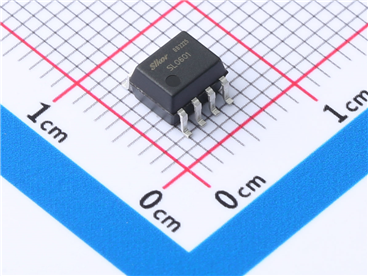

Site Map | 萨科微 | 金航标 | Slkor | Kinghelm
RU | FR | DE | IT | ES | PT | JA | KO | AR | TR | TH | MS | VI | MG | FA | ZH-TW | HR | BG | SD| GD | SN | SM | PS | LB | KY | KU | HAW | CO | AM | UZ | TG | SU | ST | ML | KK | NY | ZU | YO | TE | TA | SO| PA| NE | MN | MI | LA | LO | KM | KN
| JW | IG | HMN | HA | EO | CEB | BS | BN | UR | HT | KA | EU | AZ | HY | YI |MK | IS | BE | CY | GA | SW | SV | AF | FA | TR | TH | MT | HU | GL | ET | NL | DA | CS | FI | EL | HI | NO | PL | RO | CA | TL | IW | LV | ID | LT | SR | SQ | SL | UK
Copyright ©2015-2025 Shenzhen Slkor Micro Semicon Co., Ltd